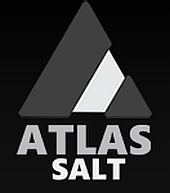 Alabama ships 8 graphite samples to Stanford University
Alabama ships 8 graphite samples to Stanford University
ALABAMA GRAPHITE CORP. PROVIDES GRAPHITE PRODUCT SAMPLES TO STANFORD UNIVERSITY FOR LARGE-SCALE ALUMINUM BATTERY DEVELOPMENT
Alabama Graphite Corp. has provided eight different American-sourced and manufactured natural graphite product samples to Stanford University. The graphite samples, which originated from the company’s Coosa graphite project located in east-central Alabama, will be used for department of chemistry professor Dr. Hongjie Dai’s continued work on aluminum-ion battery development, and more specifically, large-scale aluminum-ion battery development. As requested by Dr. Dai, the processed graphite products conveyed by the company consisted of downstream and processed graphite samples of various size fractions with purity levels reaching as high as 99.98 per cent carat. The samples were manufactured using multiple downstream (after primary production) processes to produce specialty graphite products for potential use in batteries. The downstream processes applied to the company’s unfinished primary processed graphite concentrate included low-temperature halogen-gas-based purification, classification, micronization, spheronization and surface treatment (coating).
Dr. Dai commented positively concerning the company’s downstream, non-polluting, low-temperature thermal purification process for purifying the company’s graphite to 99.95 per cent carat and higher — without the use of dangerous and environmentally harmful hydrofluoric acid (as is commonly used in graphite production in China) or costly high-temperature thermal upgrading and purification (see Sept. 29, 2015, announcement).
Dr. Dai and his group of Stanford scientists made significant news in April, 2015, when they announced the invention of the first high performance aluminum-ion battery that is faster charging, longer lasting and inexpensive when compared with many commonly used commercial batteries. The aluminum-ion battery was made of aluminum and graphite. It is not yet commercially available. “We have developed a rechargeable aluminum battery that may replace existing storage devices,” commented Dr. Dai, who described his novel aluminum-ion battery as an “ultrafast” rechargeable battery with reported unprecedented charging times. The Stanford team was able to charge a smart phone to full capacity in one minute with the aluminum-ion battery prototype, as opposed to hours with a conventional lithium-ion (secondary or rechargeable) battery. In comparison with many commercial batteries that are widely used today, the prototype aluminum-ion battery has good capacity and outstanding cycle life, with no decay (capacity fade) even after 7,500 cycles. Grid-scale energy storage to manage electricity supply would benefit significantly from batteries that could withstand repeated cycling of discharging and charging. Current lithium-ion batteries have comparatively limited lifetimes of only 1,000 to 3,000 cycles, which is adequate for the lifespan of most smart phone and home electronic products, but not ideal for long-life energy grid infrastructure applications. Financial support for Dr. Dai’s aluminum-ion battery research at Stanford was provided to Stanford University by the United States Department of Energy (DOE). The company has not received any funding from the DOE, and it did not receive any funds from Stanford University in exchange for the graphite products samples that were provided.
The primary difference between a conventional lithium-ion battery — consisting of a graphite anode and a nickel cathode — and Stanford’s aluminum-ion battery is that the aluminum-ion battery consists of two electrodes, a negatively charged anode made of aluminum metal and a positively charged cathode made of graphite. Dr. Dai’s research at Stanford provides a new approach to potentially enable fast-charging, bendable and durable aluminum-ion batteries, and may possibly lead to more affordable, safer batteries in the future.
Donald Baxter, president, chief executive officer and executive director of the company, stated: “We are honoured to be working with Stanford University — one of the world’s most prestigious universities — and the world-renowned Dr. Dai with a myriad of our U.S.-sourced graphite product samples for this potentially groundbreaking battery research and development.
“While we firmly believe that lithium-ion batteries will remain the rechargeable battery technology of choice for the foreseeable future, the potential of Dr. Dai’s aluminum-ion batteries is both very exciting and promising — in particular as it pertains to large-scale storage applications, such as grid-scale electric storage. Our relationship with Stanford University and Dr. Dai demonstrates AGC’s commitment to technological advancement and diversification.”
Qualified person
Mr. Baxter, PEng, is a qualified person as defined by National Instrument 43-101 guidelines, and has reviewed and approved the content of this news release.
About Alabama Graphite Corp.
Alabama Graphite is focused on the exploration and development of its flagship Coosa graphite project in Coosa county, Alabama, and its Bama mine project in Chilton county, Alabama, as well the research and development of its proprietary manufacturing and technological processing process of battery materials.
Alabama Graphite holds a 100-per-cent interest in the mineral rights for these two U.S.-based graphite projects, which are both located on private land. The two projects encompass more than 43,000 acres and are located in a geopolitically stable, mining-friendly jurisdiction with significant historical production of crystalline flake graphite in the flake graphite belt of central Alabama, also known as the Alabama graphite belt.
































